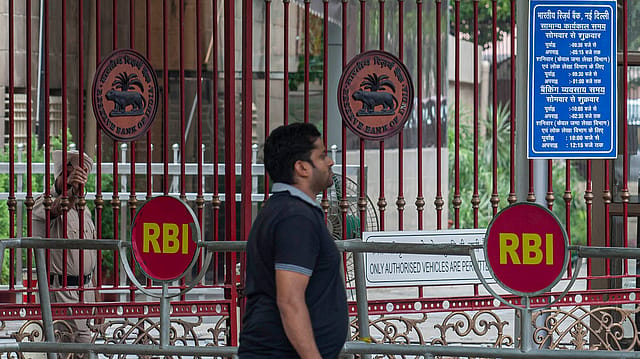RBI says inflation peaking; will bring it back to target in 2 years
ADVERTISEMENT

India's monetary policy committee will be able bring inflation back to target within a two-year time span, the Reserve Bank of India (RBI) says in its monthly bulletin.
"It may be a premature prognosis, but there are indications that inflation may be peaking," the central bank says.
"It is our hope that required monetary policy actions in India will be more moderate than elsewhere in the world and that we will be able bring inflation back to target within a two-year time span," it adds.
India's retail inflation, measured through Consumer Price Index (CPI), slightly moderated to 7.01% in June 2022 from 7.04% in May this year. This marks the sixth straight month when retail inflation has remained above the tolerance band of 4-6% recommended by the RBI.
The Reserve Bank says if the monsoon brings with it a more benign outlook on food prices, India would have tamed the inflation crisis even earlier.
As monetary policy works through into the economy and inflation falls back into the tolerance band by the fourth quarter of 2022-23, it will be the playing out of the baseline scenario, the central bank says. "In an alternative simulation which incorporates the policy actions undertaken so far, the easing of inflation could be even sooner and faster. The key is the direction of change in inflation – not its level – in these extraordinary times."
January 2026
Netflix, which has been in India for a decade, has successfully struck a balance between high-class premium content and pricing that attracts a range of customers. Find out how the U.S. streaming giant evolved in India, plus an exclusive interview with CEO Ted Sarandos. Also read about the Best Investments for 2026, and how rising growth and easing inflation will come in handy for finance minister Nirmala Sitharaman as she prepares Budget 2026.
Without a doubt, the impact of geopolitical risks will cause a very grudging decline in inflation and a possible breach of the accountability criteria, but India would succeed in bending down the future trajectory of inflation, winning the war in spite of losing the battle, the RBI says.
If real gross domestic product growth averages between 6% and 7% of GDP in 2022-23 and 2023-24, the recovery that is increasingly solidifying gets a fair chance of traction, the RBI bulletin says, adding the banking regulator will have fulfilled its mandate of prioritising price stability while being mindful of growth.
On supply-driven inflation, the Reserve Bank says shocks to prices of food, energy, commodities and critical inputs are transmitted across the world through complex supply chains. "This was evident during the pandemic, and more so after the conflict in Europe erupted, with global shocks playing a dominant role in domestic inflation dynamics. These global factors present difficult policy tradeoffs between price stability and stabilising economic activity, especially when the economy is recuperating from repeated shocks. They add to the macroeconomic and financial stability challenges from volatile capital flows in a financially globalised world," it adds.
According to SBI Research, inflation is likely to end up closer to 5% by March 2023, with the downward trend in price rise attributable to supply side factors auguring well for the economic indicator going forward. In its recent Ecowrap report, the lender notes that supply side inflation is currently driving 64% of headline inflation in India, while the remaining 36% is due to demand-led factors.
